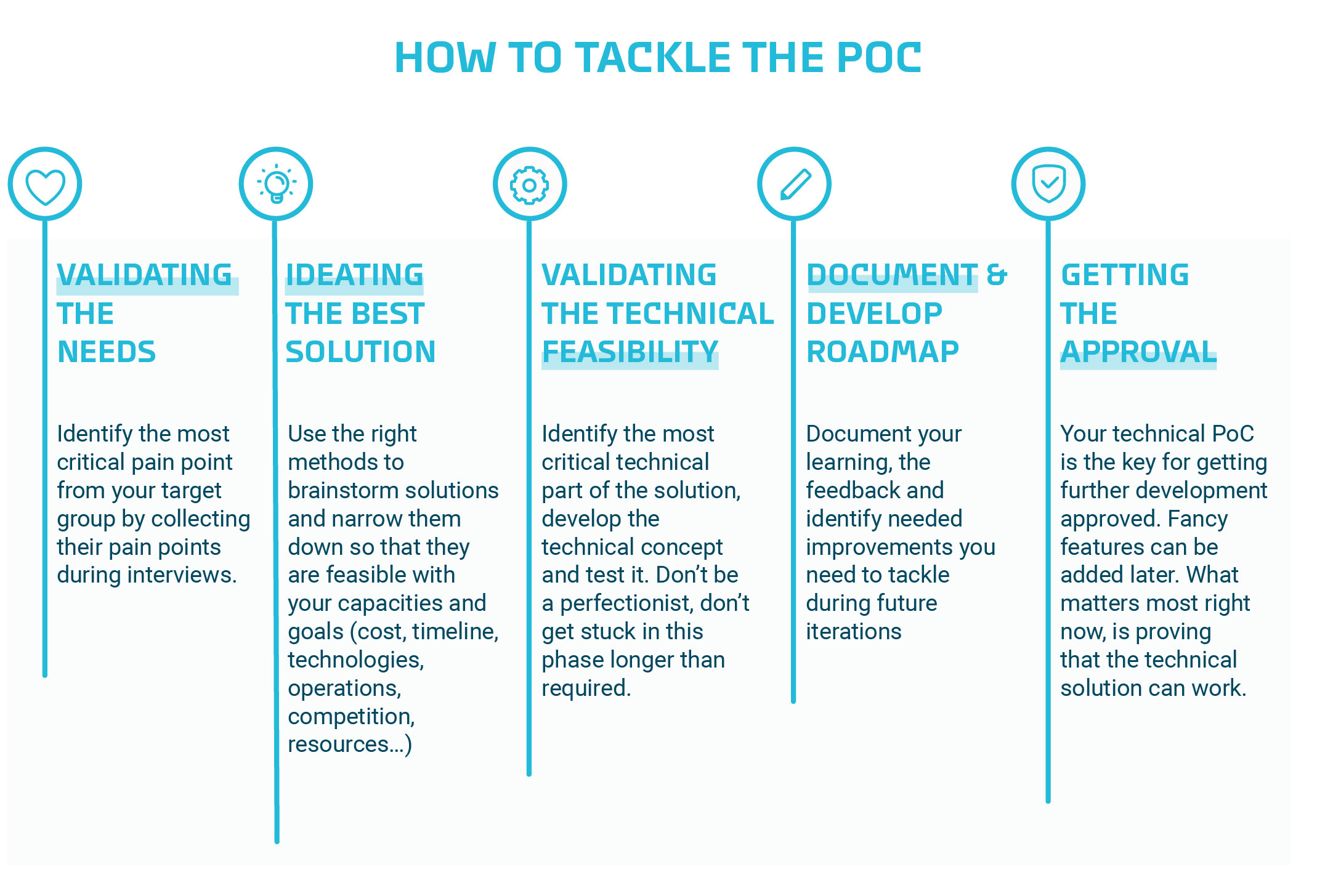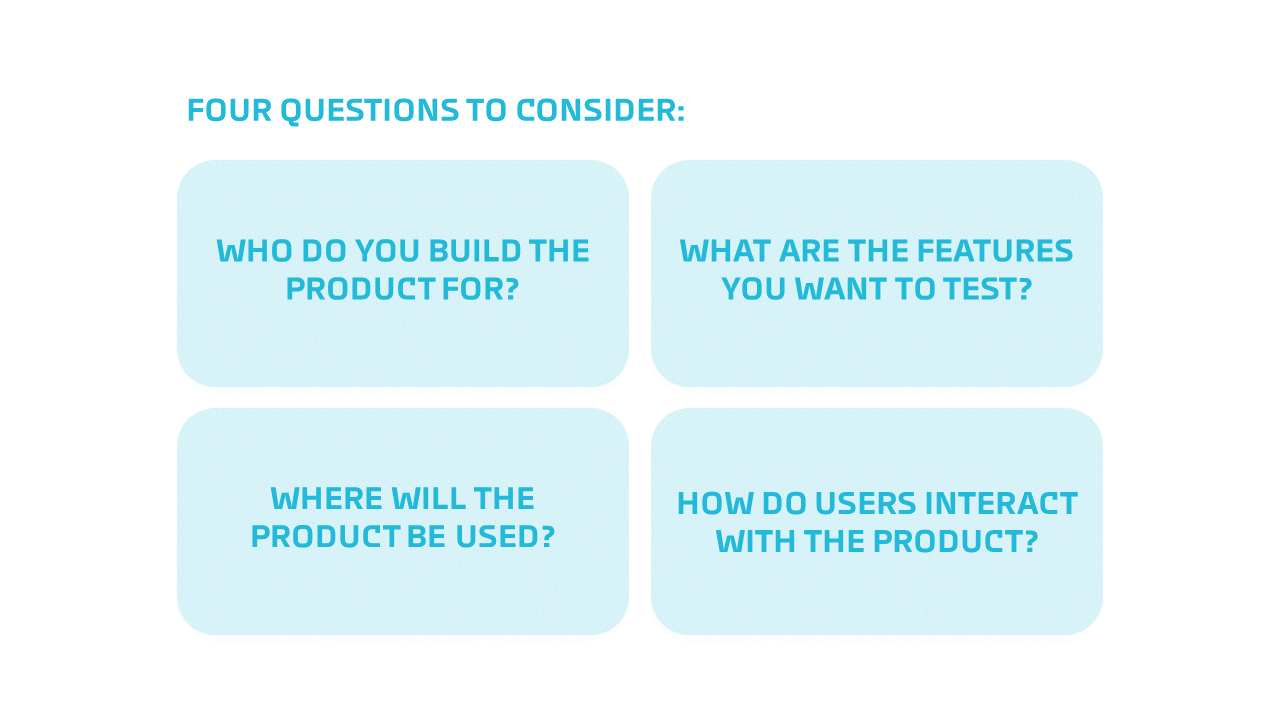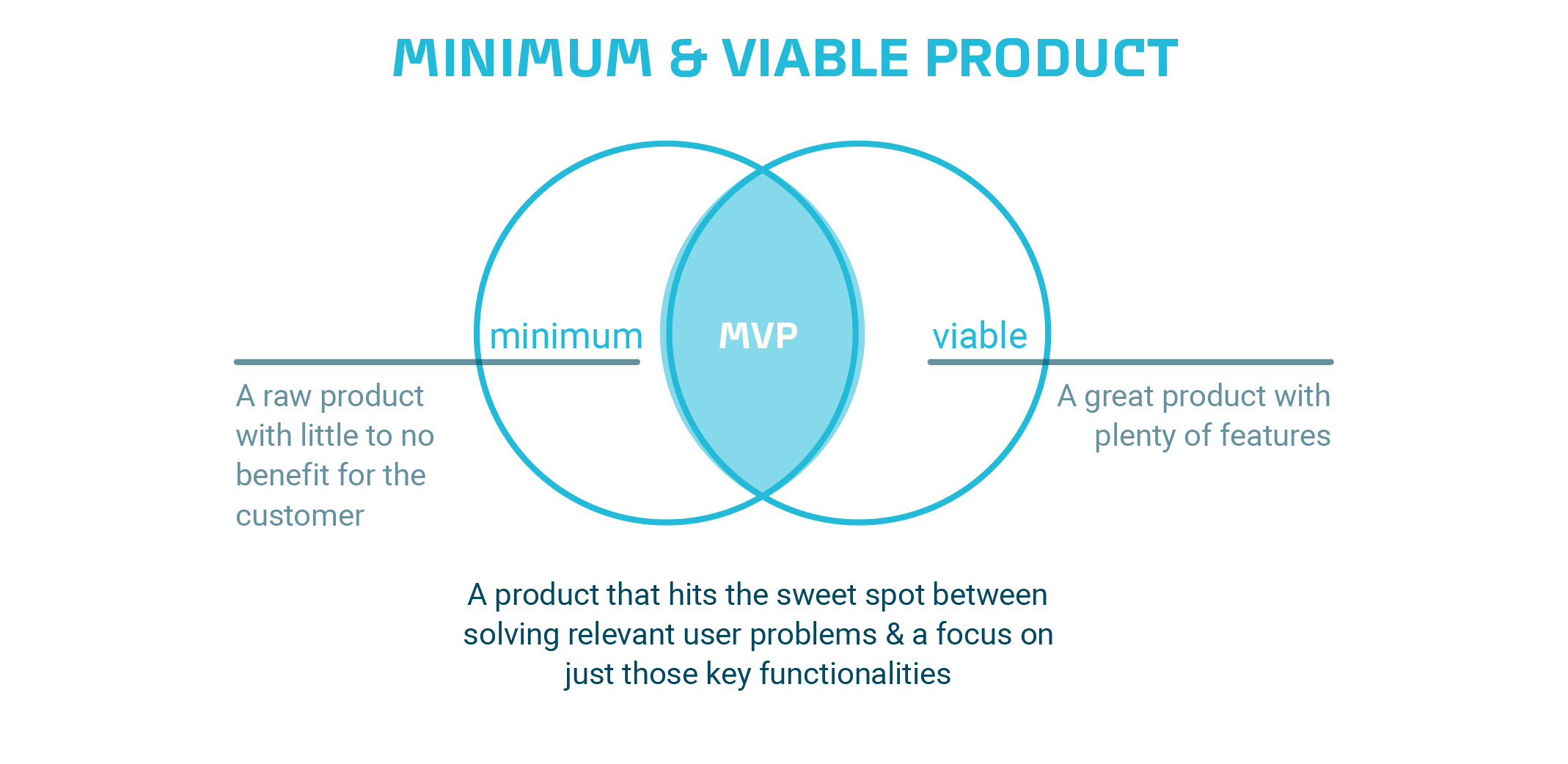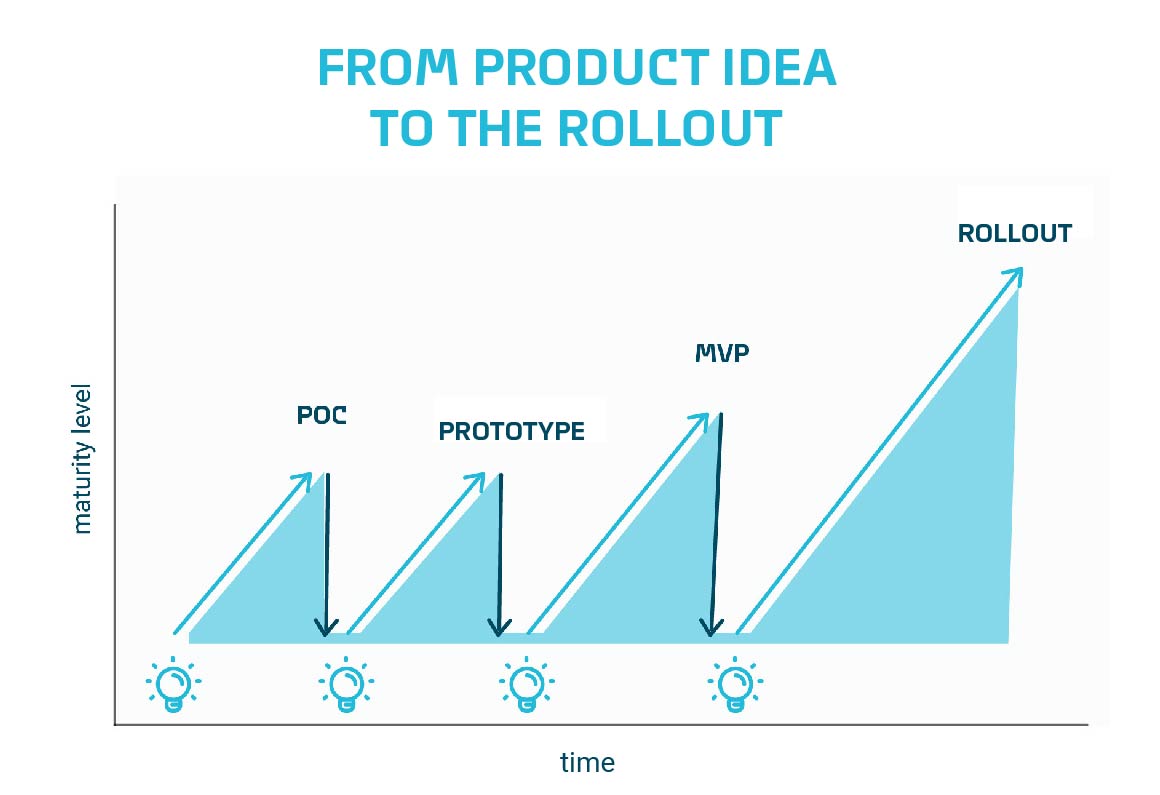Lean Innovation – How to do product development in a lean and efficient way
Nowadays, it is especially important to keep the process of product development lean and efficient. Therefore it is helpful to determine the concrete goal of each product development phase. This makes it easier to keep the entire process goal-oriented, structured and efficient.
A lean product development process can be divided into 5 phases: Ideation, Proof of Concept, Rapid Prototyping, MVP and Product Rollout. Each of these phases is essential to achieve a structured and efficient process of product development. The complexity and duration of each phase depend on the specific product and can’t be evaluated generally.
However, it is important to set the right focus, especially in the first phases. Otherwise, you risk investing a lot of time and resources in a product that potentially has no market demand.
This article gives you an overview of the respective goal and the most important steps of each phase in the process of product development.
Phase 1: The Ideation
The first phase of the product development process is the ideation.
The key to cutting-edge technology innovation is user-centricity. This is also the main focus during the first phase because nobody wants to build a product that does not actually get accepted by users. The aim is therefore to identify the pain points and needs of the potential customer start developing a product idea based on these.
The best way to ensure user-centricity is through Design Thinking. It’s a proven and iterative problem-solving process that anyone can use to develop cutting-edge innovations.
And this is how Design Thinking works:
- Start by empathizing with your user
- Define the goals of your users
- Start generating ideas
Make sure to not skip the essentials. Engage in the Empathize and Define phases until you have truly identified the user’s pains and defined their view of the problem. Once you have mastered those phases, it is time for you to get creative and systematically generate good ideas. This is what you do in the Ideate phase.
If you want to dig in deeper into the topic on Design Thinking, we got some further content for you here.
Phase 2: The proof of concept
The second product development phase is the proof of concept.
You do not want to invest into product development without knowing if an idea is technically feasible. Therefore, you try to answer a simple question in this phase:
Is it technically possible to build a product with this concept?
As the name indicates, the proof of concept (PoC) is a technical validation to the feasibility of an idea. It helps you to avoid unnecessary investments in the development of a product.
This is how to best tackle the proof of concept:

In a nutshell: During this stage of your development, you have to prove that your idea is actually needed, come up with a technical concept to solve the user’s pain and develop a very first technical solution. Take your company’s constraints into account, such as your budget, timeline, capacities and resources. However, do not try to set up a perfect solution. Instead, try to cut out all the noise.
Phase 3: Prototyping
In the third phase of the process, you develop your first prototype. “Iterate fast or go home†is the guiding principle of this phase. You already know that your product is technically feasible. Now it is time to start thinking about how you could build the actual product. This is exactly what you do in the prototyping phase.
A prototype is a physical demonstration of your product idea. It is an early sample of your product that you use to test, evaluate and gather feedback from users about practicality, design and functionality of your product. It is essential to work very close to the customer and to make fast iterations. This ensures that your product will be accepted by the market in the end.
The following four questions will help you to focus on what is most important for the phase of prototyping:

Phase 4: The minimum viable product (MVP)
Based on your high-fidelity prototype, you can start developing your MVP – your Minimum Viable Product. An MVP is a light version of your final product. It lets you collect the maximum amount of insightful feedback about certain functionalities of your product. In this phase, you aim to develop your product towards a version that solves your customers pain points in the best way possible.
The main difference between the MVP and your final product is that the MVP focuses on one core functionality only. This is the functionality that solves your user’s core problem. No fancy extras, no frills. Instead, one clear solution for one clear user need.

Phase 5: The product rollout
The final phase of product development is the product rollout. If you have been waiting for the moment to let your perfectionism play out, this phase is the right time. Depending on the type of product that you have developed, this phase can vary in size, costs and effort.
The aim of this phase is to determine the final quality and features of your product and to integrate it with existing products or systems. You will also develop a strategy for marketing and sales and finalize the product pricing structure.

If you followed the five steps, there is a high chance you have developed a tech innovation that solves real pains in the best way possible. You can now roll it out at scale. Step by step, you have created a tech innovation that really matters.
Do you want to dig deeper into the 5 phases of product development? We gathered our knowledge and experiences from over 7 years in the R&D business and put together a detailed guide about the process of product development:
NEVER MISS ANOTHER NEWSLETTER!
LATEST BLOGS
Starbucks and Big Tobacco
Back in the 1950’s smoking was glamorous, and just about everybody who was anybody smoked cigarettes. Then came the discovery, to the shock of millions, that sucking smoke into your lungs might not be good for you. Then came another revelation that one of the substances in tobacco, nicotine, which was used as a poison by the Egyptians during the times of the Great Pyramids, is addictive. People then began a mass exodus from the consumption of nicotine via inhaled smoke.
Read MoreWal-Mart Goes Green – What about your company?
With the price of gas above $3.00, some companies (and hopefully all) are beginning to look at the fuel efficiency of their fleets. Wal-Mart is the most public example of this with its trucking fleet. Its efforts include:
Read More



